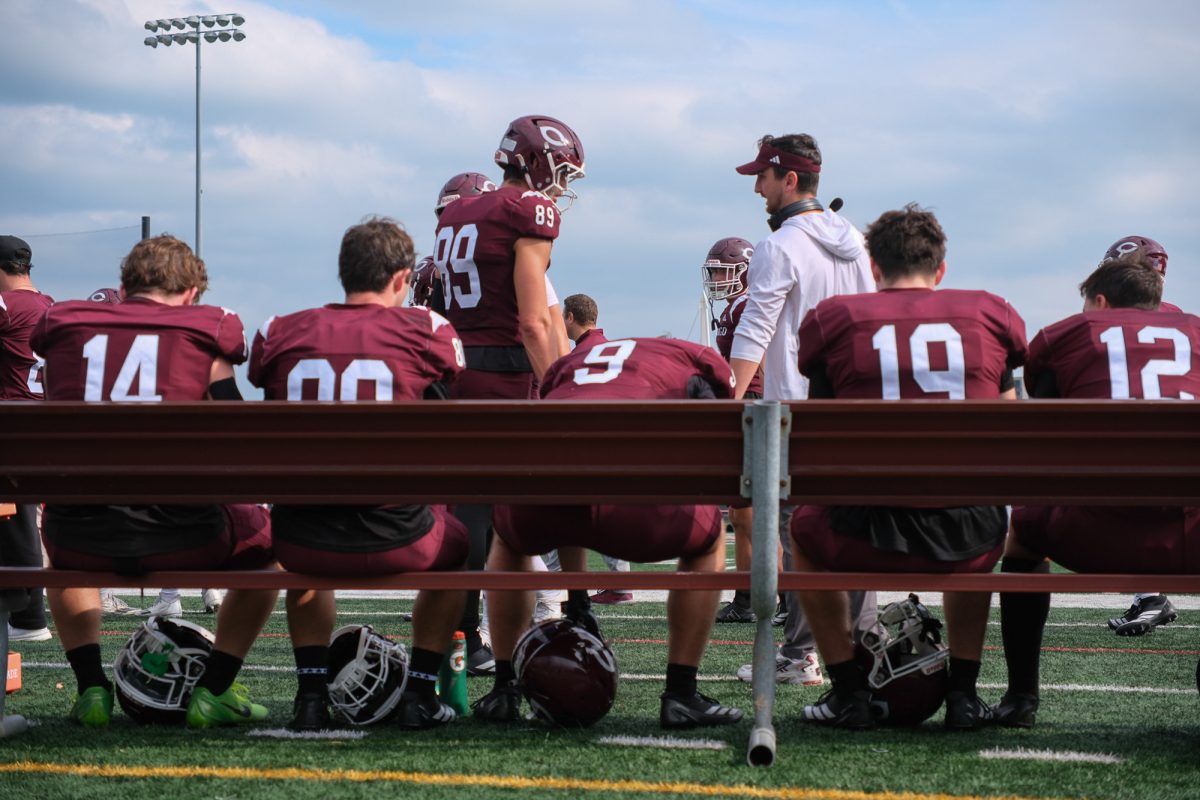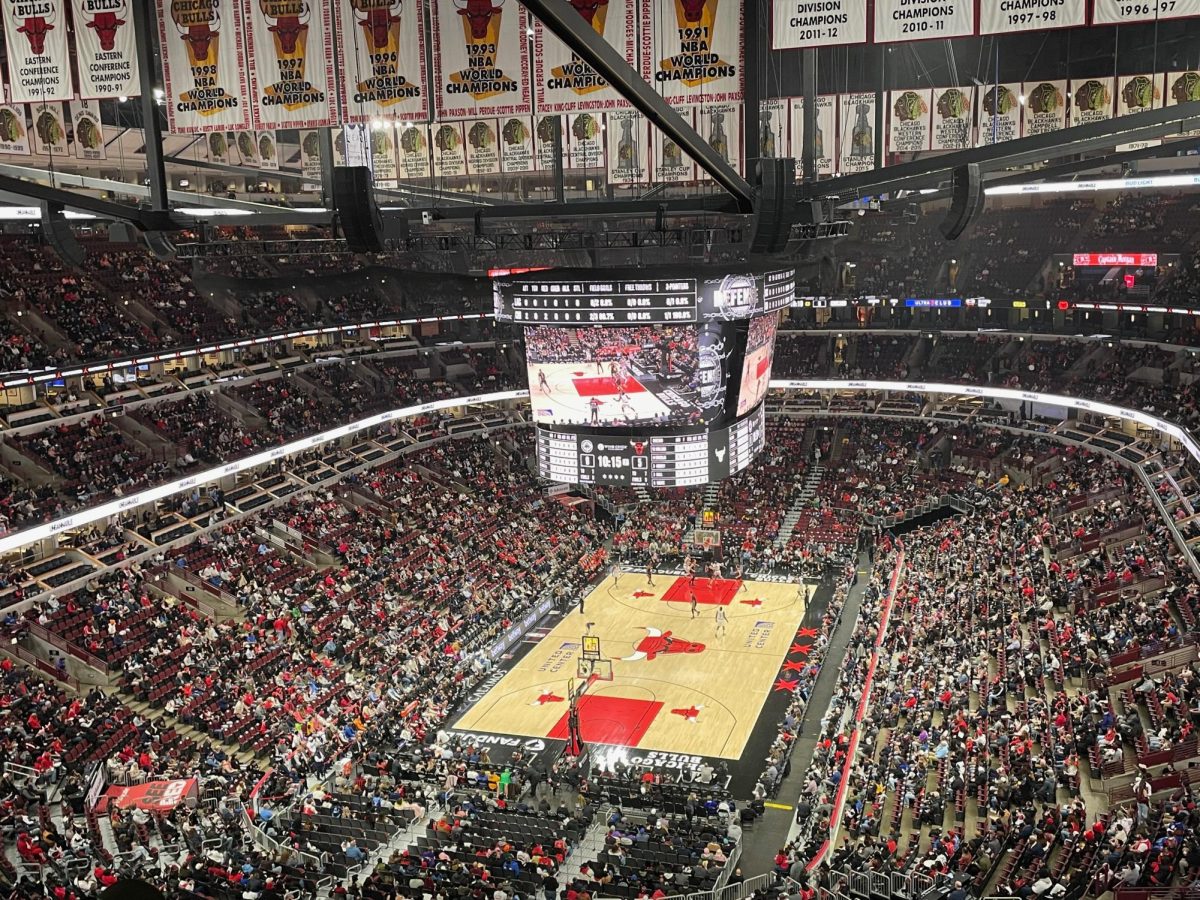Fall has always been my favorite season as an athlete. The weather is perfect for playing sports, football season is in full swing, the World Series is on, and the NBA season is just about ready to start (well, most of the time). But fall is also special for another reason altogether—it’s finally time for UAAs. Between the cross country and volleyball teams, which have one meet to determine the UAA champions, and soccer and football, who are playing the last games of the regular season, late October and early November is when conference champions are ultimately decided.
Most people on campus know that the University of Chicago used to be in the Big Ten conference, regardless of whether or not they know exactly what the Big Ten actually is. But a surprising few know that we’re in the UAA, and even fewer know the teams that make up this conference. So let me help you out a little bit by providing some background.
Chicago pulled out of the Big Ten in 1946, the decision of then-president Robert Maynard Hutchins, a vocal antagonizer of athletes and athletics in general. When sports were reinstated in 1976, we were a part of the Midwest Collegiate Athletic Conference until finally in 1987 Chicago became a charter member of a new, unique conference: the University Athletic Association, better known as the UAA.
Originally nicknamed “The Nerdy Nine,” the UAA featured schools traditionally thought of as academics-first institutions: Emory, Wash U, NYU, Carnegie, Brandeis, Rochester, Case Western, Johns Hopkins, and, of course, the University of Chicago. Johns Hopkins later left, leaving us with the eight-team conference we have today, although some schools don’t participate in every sport. Now in its 25th year, the UAA has been a tremendous success, and is one of DIII’s powerhouse conferences.
The UAA represents an enormous commitment on the part of our athletic department. The men’s and women’s soccer teams have flown to the East Coast twice this season to compete against conference foes. This weekend, the football team is traveling to Cleveland to take on Case Western. Next weekend, volleyball will fly to New York City for the UAA championship meet. Cross country is hosting its conference meet at Montrose Harbor on the north side of the city, but last year, the team flew to New York as well to run at Van Cortland Park, one of the most historic cross-country courses in America. All the schools in the UAA are located in major cities, so visiting these other schools is never dull (well, maybe except for Cleveland). You’re never going to Carnegie, or NYU, or Brandeis. You’re going to Pittsburgh, New York City, and Boston. No other D-III conference is even remotely like this.
Being in the UAA also allows D-III athletes to feel like D-I athletes. Getting onto a plane to compete with your Maroon team bag in tow—emblazoned with that historic Chicago C—is an altogether unique feeling. You’re flying halfway across the country just to compete in an athletic event. In the case of cross-country athletes, you travel to compete for less than half an hour. Very few people, save for professional athletes and some D-I athletes, get to have that experience.
What makes the UAA so special is that the link between the schools is philosophical rather than geographical. The ACC, the SEC, and all the other big-time conferences are linked by location. It’s right there in the name: Atlantic Coast Conference, Southeastern Conference. Without the geography, these teams and schools have little to nothing in common. The UAA is unique in that the schools are philosophically similar. “Members of the UAA share the belief that academic excellence and athletic excellence are not mutually exclusive,” says the UAA Website. “…[the] academic enterprise is the primary element. Student athletes are just that—students first and athletes second.”
The University of Chicago prides itself on cultivating multifaceted individuals. “This commitment to the development of the ‘whole’ person emerges from our belief that play, sport, and athletics are a fundamental part of any civilized culture,” writes Chicago Athletic Director Tom Weingartner in a letter to student athletes. “[We] believe that your participation in intercollegiate competition can be a profoundly meaningful experience that can shape you as a person for a lifetime.”
Notice that Weingartner writes “person,” and not “athlete,” or “student,” or any other classifying term. We cannot be grouped into some broad category because doing so ignores the other aspects of our lives that are just as important. The University of Chicago understands that, and luckily, we are part of a conference that emphasizes the whole of the term “student athlete” rather than just one or the other.
The athletic department should be applauded for having the foresight and commitment to join the UAA. The athletes at the University of Chicago appreciate it.
Also, and perhaps most importantly, beat Wash U. We can’t go forgetting about that.








